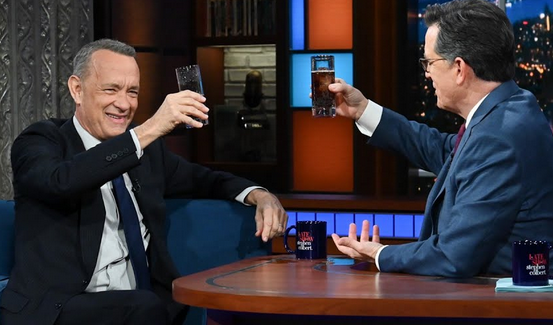Jim Beam was a real person. He was a descendant of Johannes Böhm, who moved from Germany to Kentucky and started selling “Old Jake Beam Sour Mash” in 1795. James Beauregard Beam was the member of the family who guided the company through Prohibition. Similarly, Don José Antonio de Cuervo held a land grant near Tequila, in the state of Jalisco, Mexico. Dom Pérignon did not invent champagne, contrary to popular belief, but he was a monk who helped to develop the drink, which was perfected after his death. Arthur Guinness began brewing ale in 1759. Bourbon is probably named after either Bourbon Street, New Orleans, or Bourbon County, Kentucky, but eventually the name comes from the Bourbon dynasty, after whom both were named.
When it comes to cocktails, things are more complicated, and it is here that we are diving into the fascinating world of Cocktails Named After Celebrities. On New Year’s Eve, Tom Hanks invented a drink he calls a Diet Cokagne—Diet Coke and champagne, which is apparently quite tasty if one likes alcohol. However, before hearing this absolutely delightful name, Stephen Colbert suggested it instead be a Tom Hanks. “We already have a Tom Collins,” he said, and that’s true, but the fun fact is that no one actually knows who Tom Collins was. If the cocktail becomes popular and the name becomes a Tom Hanks, it will be one of the few occasions when a cocktail was named after a celebrity who created it.
In my childhood, I developed an intense love of the Shirley Temple. These days, it’s lemon-lime soda and a splash of grenadine, but in the old days, it was made with ginger ale. Delicious either way, and not hurt by the addition of a bit of orange juice. However, Shirley Temple not only didn’t create them but didn’t like them. I don’t know who created the Roy Rogers or how he felt about them, but it’s basically “what if Shirley Temple but Coke?” Traditionally, they’re both garnished with maraschino cherries, but I don’t like maraschino cherries and have always fished them out to give to someone else at the table when I have them out—and, yes, I make Shirley Temples at home as a grown-up.
If you want to pay tribute to the founders of United Artists, you can try one of a number of cocktails. The Mary Pickford is light rum, pineapple juice, grenadine, and maraschino cherry juice. (So says my source, but presumably it’s the liquid from the jar.) Douglas Fairbanks? Apparently it’s a martini, but it specifies Plymouth gin and French vermouth and is garnished with orange and lemon peel. For Charlie Chaplin fans, try a mix of sloe gin, lemon juice, and apricot brandy. There does not appear to be a D. W. Griffith cocktail.
A Ginger Rogers is, naturally, a mix of gin and ginger ale, with added lemon juice, mint, and either fresh ginger or ginger syrup. A Jean Harlow is equal parts light rum and sweet vermouth, garnished with lemon peel. For a Will Rogers, blend gin, vermouth, orange juice, and curacao. (I’m not giving measurements, I admit, but I suspect a lot of these have undergone many variations.) A more recent addition to the genre is the Joan Collins, which is vodka, honey-hibiscus syrup, lime, cucumber, and mint. Which definitely sounds as recent as it doubtless is, given some of those ingredients.
Arnold Palmer did indeed drink Arnold Palmers—an equal blend of lemonade and unsweetened tea—and John Daly did indeed add vodka to his Arnold Palmers. But did Dita Von Teese invent the Cointreau Von Teese (Cointreau, lemon juice, apple juice, and monin violet syrup)? Some people say she did. Possibly David Bowie invented the David Bowie (New Deal Puddle Chocolate Liquor and bourbon), but possibly not. It’s certainly more possible than the idea that Samuel Adams actually had anything to do with Samuel Adams beers.

